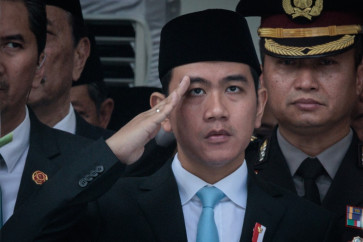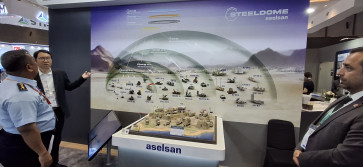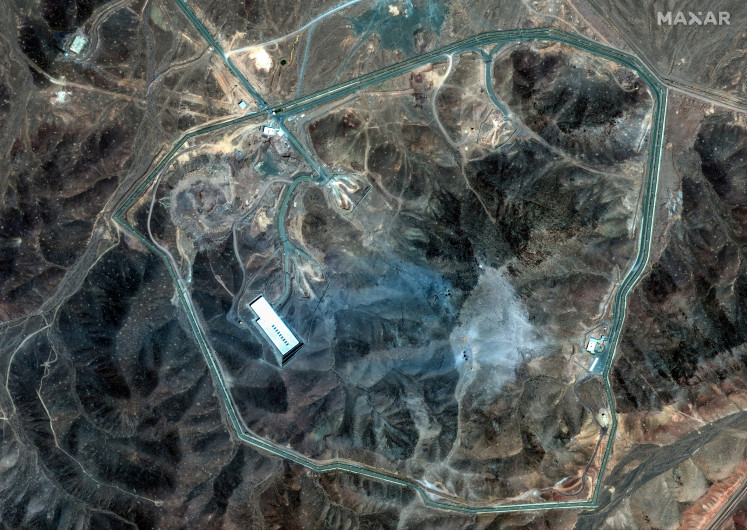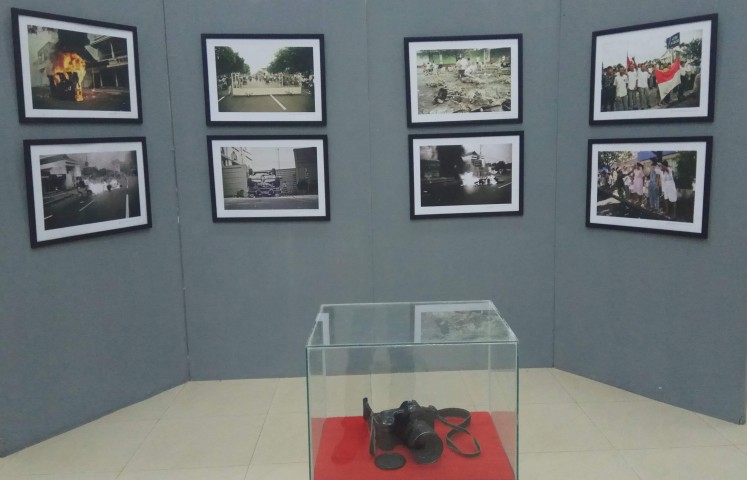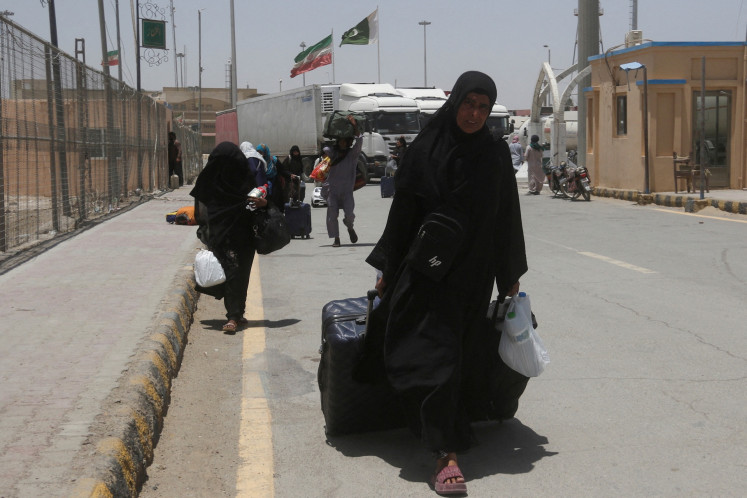Popular Reads
Top Results
Can't find what you're looking for?
View all search resultsPopular Reads
Top Results
Can't find what you're looking for?
View all search resultsTsunami early warning: Merits and drawbacks
Nearly all the islands of Indonesia are identified as vulnerable to earthquakes and tsunamis as they are intersected by three tectonic plates, namely the Indo-Australian, Eurasian and Pacific plates
Change text size
Gift Premium Articles
to Anyone

Nearly all the islands of Indonesia are identified as vulnerable to earthquakes and tsunamis as they are intersected by three tectonic plates, namely the Indo-Australian, Eurasian and Pacific plates.
The Indo-Australian plate moves in a roughly northward direction and slides into the Eurasian plate, while the Pacific plate moves westward. When the plates collide in shallow waters they trigger the potential for a tsunami.
The fault line located in the 'ring of fire' connects the country with Japan, leaving Kalimantan as the only island considered safe from earthquake and tsunami threats.
The high intensity of tectonic movements has meant that the Indian Ocean demands serious attention in inspection and early-warning system development, to reduce the numbers of victims of any potential disaster.
'We've learned from the Aceh earthquake in 2004, when Indonesians had no proper awareness and knowledge to face calamities. This was made worse by the absence of any tsunami early-warning system in Aceh at the time,' said Khairul Munadi, chairman of the Tsunami and Disaster Mitigation Research Center (TDMRC) in Banda Aceh.
With the 2004 disaster, Indonesia began to realize that such huge sea waves could ravage the country. In fact, history has recorded several major tsunamis in Indonesia.
According to the National Disaster Mitigation Agency (BNPB) several tsunamis hit Indonesia in the 1990s. On Dec. 12, 1992 a tsunami struck Flores and claimed 2,100 lives, followed by Banyuwangi in 1994 with 209 victims and Sumba on Aug. 19, 1997 with 189 victims.
'The closest to the 2004 Aceh tsunami was 1997, when a similar disaster occurred in Sumba,' noted Khairul, wondering aloud why the government and people had not realized earlier the constant tsunami threat especially to southern Indonesian islands.
Several parts of Indonesia have local wisdom functioning as effective traditional early-warning systems. In the region of Simeulue Island, southern Aceh, for instance, a tsunami is known as a smong, which has the broader sense of confusion or turbulence happening at certain times.
The inherited wisdom shared by the Simeulue people warned them to immediately stay away from shoreline when the tsunami was about to emerge, thus slashing the total of victims to only five people.
Such a traditional understanding has proven to serve as an effective early-warning system for communities still without access to modern technology. 'In modern systems people aren't directly involved but only become end users of the technology,' Khairul added.
The 2004 tsunami experience finally led Indonesia to a concerted mitigation effort with the other tsunami-prone countries to build a mechanism referred to as the Indonesia Tsunami Early Warning System (Ina-TEWS).
Indonesia launched Ina-TEWS on Nov. 11, 2008 with the aid of several donors. including Germany, Japan and the US. Local communities were expected to live more peacefully because the system aimed at providing information through cell phones, television and other channels.
Within about three years, the early-warning system was developed to achieve its peak performance capacity. At present, Ina-TEWS is capable of issuing a tsunami warning five minutes after an earthquake. However this would not have helped the thousands hit by the waves in Aceh seconds or minutes after the earthquake back in December 2004.
The major actors in the application of the early-warning technology are the Meteorology, Climatology and Geophysics Agency (BMKG), the Agency for the Assessment and Application of Technology (BPPT) and the National Survey and Charting Coordination Agency (Bakosurtanal).
This system begins with information conveyed by the BMKG about tremors with the magnitude as shown on the Richter scale, the time of occurrence, the location and depth of the epicenter, and the potential for any tsunami.
'So far the system of analysis we've applied to earthquakes with the potential to set off a tsunami has worked very well and accurately,' said Erdawati, head of the geophysics station in Mata Ie, Banda Aceh.
The tsunami early-warning equipment relies on the exchange and integration of data sent by sensors in different places. The equipment comprises seismographs for monitoring tremors, which are integrated with data from tsunami buoys and from tide gauges placed at ports on seashores.
'Our function is limited to analyzing the potential arising from the quakes that we monitor. Later the warning of any tsunami potential will be passed on by the relevant agency, which is the provincial disaster mitigation agency in cooperation with the regional administration,' explained Erdawati.
However the early-warning system also has its weaknesses, notably in remote disaster-prone areas.
'Not all communities are familiar and connected to means of modern technology used to convey a quake and tsunami warning. The dissemination of information about tremors and tsunami threats cannot reach the people needing it most in vulnerable and far-off regions,' Erdawati noted.
The Ina-TEWS system uses a satellite platform for its communication. The main constraint in the system is the power needed in a state of emergency, particularly for tsunami sirens installed in areas liable to disasters.
'The standard operating procedure of state-owned electricity company PLN is that seven minutes after a major earthquake, power supply has to be shut off to prevent widespread damage. But if reserve power for tsunami sirens is lacking, the early-warning system won't function optimally,' added Erdawati
This technology is also highly vulnerable to human error in its operation. The sounding of tsunami sirens to give a warning still has to be manually done by activating siren buttons, which is to be performed by an appointed official, such as the governor.


